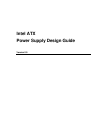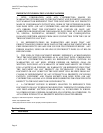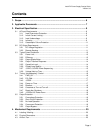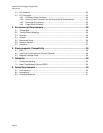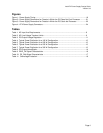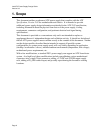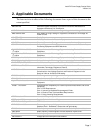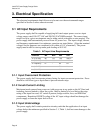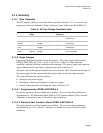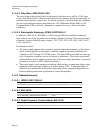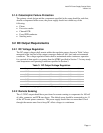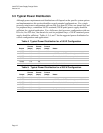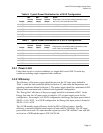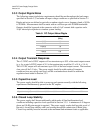
Intel ATX Power Supply Design Guide
Version 0.9
Page 8
3. Electrical Specification
The electrical requirements that follow are to be met over the environmental ranges
specified in Section 5 unless otherwise noted.
3.1 AC Input Requirements
The power supply shall be capable of supplying full rated output power over two input
voltage ranges rated 100-127 VAC and 200-240 VAC RMS nominal. The correct input
range for use in a given environment may be either switch-selectable or auto-ranging. The
power supply shall automatically recover from AC power loss. The input voltage, current,
and frequency requirements for continuous operation are stated below. (Note that nominal
voltages for test purposes are considered to be within ±1.0 V of nominal.) The power
supply must be able to start up under peak loading at 90 VAC.
Table 1: AC Input Line Requirements
Parameter Min Nom Max Unit
V
in
(115 VAC) 90 115 135 VAC
rms
V
in
(230 VAC) 180 230 265 VAC
rms
V
in
Frequency 47 -- 63 Hz
I
in
(115 VAC) 7.0 A
rms
I
in
(230 VAC) 3.5 A
rms
3.1.1 Input Overcurrent Protection
The power supply shall incorporate primary fusing for input overcurrent protection. Fuses
should be slow-blow type or equivalent to prevent nuisance trips.
3.1.2 Inrush Current Limiting
Maximum inrush current from power-on (with power on at any point on the AC Sine) and
including, but not limited to, three line cycles, shall be limited to a level below the surge
rating of the input line cord, AC switch if present, bridge rectifier, fuse, and EMI filter
components. Repetitive ON/OFF cycling of the AC input voltage should not damage the
power supply or cause the input fuse to blow.
3.1.3 Input Undervoltage
The power supply shall contain protection circuitry such that the application of an input
voltage below the minimum specified in Section 3.1, Table 1, shall not cause damage to the
power supply.



